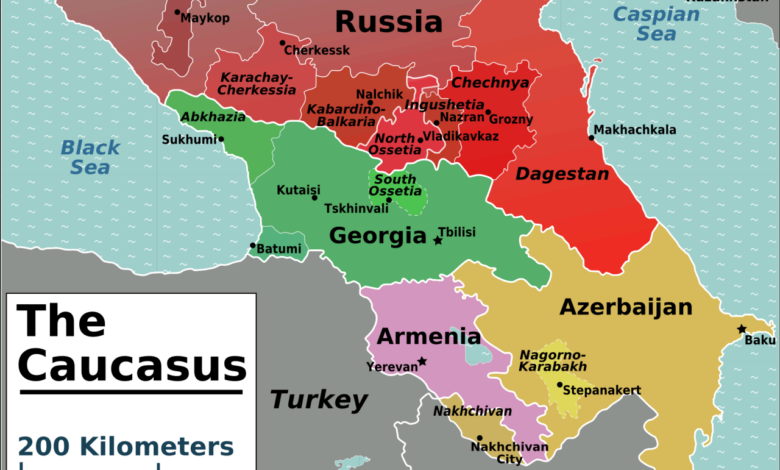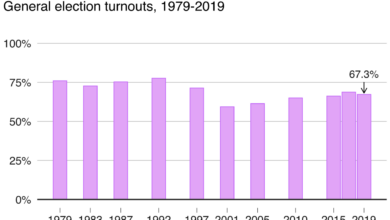
Britains Party Manifestos Lack Detail But Leave Clues
Britains party manifestos lack detail but leave clues – Britain’s Party Manifestos Lack Detail But Leave Clues: So, you’ve been wading through the latest political manifestos, haven’t you? That dense thicket of promises, carefully chosen words, and…well, a surprising lack of specifics in many areas. This isn’t just about politicians being vague; it’s a strategic game, a carefully crafted dance between transparency and ambiguity. We’ll delve into the hidden meanings, the implied policies, and the rhetorical flourishes used to shape our perceptions of the candidates and their platforms.
Get ready to uncover the clues hidden within the seemingly empty spaces.
We’ll dissect the manifestos, comparing the levels of detail across different parties and exploring how the use of vague language, omission, and persuasive rhetoric influences the overall message. We’ll also analyze how these choices reflect the parties’ electoral strategies and consider the potential implications for voters. It’s a fascinating look at how political messaging shapes public perception, even (or especially) when it’s intentionally unclear.
Identifying Vague Promises
Political manifestos, while aiming to articulate a party’s vision, often fall short in providing concrete details. This vagueness can stem from various factors, including the need to appeal to a broad electorate, the inherent uncertainty of future circumstances, or simply a lack of well-defined policy proposals. Analyzing the language used reveals a pattern of ambiguity that leaves voters uncertain about the practical implications of the promises made.
Examples of Vague or Ambiguous Language in Manifestos
The following examples illustrate how vague language obscures the true intentions and potential impact of proposed policies. It’s crucial to critically examine these statements to understand their potential interpretations.
- “Invest in our infrastructure.” This phrase, common across many manifestos, lacks specificity. What type of infrastructure? Roads, bridges, broadband, or something else? How much investment? Over what timeframe?
The ambiguity allows for vastly different interpretations and implementation strategies.
- “Create high-skilled jobs.” Again, this lacks detail. What constitutes a “high-skilled” job? How many jobs will be created? In what sectors? The lack of specifics makes it difficult to assess the feasibility and impact of this promise.
So, Britain’s party manifestos – vague as ever, right? You have to read between the lines to find any real meat. It makes you think about how much we don’t know, much like the unfolding situation in Lebanon; check out this article on how Israel’s incursion is already reshaping Lebanon – the lack of transparency is striking.
The parallels are uncanny; both situations highlight the importance of careful analysis, even when the information is scarce.
- “Improve public services.” This is a sweeping statement that could encompass a vast array of services – healthcare, education, transportation, etc. Without specifying which services will be improved and how, this promise remains hollow.
- “Strengthen our national security.” This broad statement could be interpreted in countless ways, from increased military spending to enhanced cybersecurity measures. The lack of detail makes it impossible to assess the policy implications.
- “Reduce the national debt responsibly.” The term “responsibly” is highly subjective. What measures will be taken to reduce the debt? Will this involve spending cuts, tax increases, or both? The lack of specifics leaves the potential economic and social consequences unclear.
Comparison of Detail Across Party Manifestos
The level of detail provided in manifestos varies significantly across different parties and election years. While some parties strive for concrete proposals, others favor broader, less specific statements.
| Party | Manifesto Year | Specific Policy Area | Level of Detail |
|---|---|---|---|
| Conservative Party | 2019 | Healthcare | Medium |
| Labour Party | 2019 | Nationalisation of utilities | Low |
| Liberal Democrats | 2019 | Brexit policy | High |
| Green Party | 2019 | Environmental policy | High |
| Conservative Party | 2017 | Education | Low |
Policies Without Concrete Implementation Plans
Many manifestos present policies without concrete implementation plans, leaving voters to wonder how these promises will be translated into action. For example, a manifesto might pledge to “increase funding for education,” but fail to specify the amount of funding, the allocation process, or the intended outcomes.This lack of detail has several implications: It makes it difficult to assess the feasibility and cost of the proposed policies.
It hinders effective scrutiny by the public and the media. It increases the risk of broken promises and unmet expectations. Ultimately, this vagueness undermines the democratic process by preventing informed decision-making by voters.
Uncovering Implicit Policy Positions: Britains Party Manifestos Lack Detail But Leave Clues
British party manifestos often operate on a principle of strategic ambiguity, leaving much unsaid while subtly hinting at underlying policy positions. This tactic allows parties to appeal to a broader range of voters without committing to specific details that might alienate certain segments. Analyzing these omissions and subtle word choices reveals a great deal about a party’s true priorities and potential future actions.
Instances of Implicit Stance Revealed Through Omission or Subtle Wording
Examining three specific instances highlights how implicit policy positions are revealed through the careful (or perhaps careless) crafting of manifestos. The absence of detail can be as revealing as the presence of explicit statements.
Okay, so Britain’s party manifestos are notoriously light on specifics, leaving us to read between the lines. It’s a bit like deciphering the subtle signals in how fashion choices are presented on TV – check out this fascinating article on how fashion conquered television to see what I mean. The lack of overt detail in both cases forces us to look for the underlying messages, the unspoken narratives shaping the bigger picture.
Ultimately, both politics and television fashion reveal more through what’s implied than what’s explicitly stated.
Firstly, a party’s manifesto might extensively detail plans for infrastructure investment in southern England, while making only passing mention of similar projects in the north. This omission, however subtle, implies a prioritization of the south, potentially indicating a lack of commitment to addressing regional inequalities. Secondly, a party might advocate for “responsible fiscal management” without specifying what constitutes “responsible” in their context.
This vague language allows them to appeal to those concerned about debt while leaving open the possibility of future tax cuts or spending increases depending on political expediency. Thirdly, a party’s manifesto might focus heavily on environmental protection, but lack concrete targets or timelines for reducing carbon emissions. This lack of specificity could imply a lack of serious commitment to tackling climate change, despite the positive rhetoric.
Examples of Implied Policies and Reasoning Behind Their Omission
Three examples of policies implied but not explicitly stated further illustrate this point. The strategic use of implication allows parties to test the waters with potentially controversial policies without the full weight of public scrutiny.
First, a party’s repeated emphasis on “strengthening national security” without mentioning specific defense spending increases could imply plans for significant military expansion. This omission avoids alienating voters concerned about military spending while signaling a hawkish stance to key supporters. Second, a party’s focus on “improving educational outcomes” without mentioning specific reforms to the curriculum or teacher training might indicate a preference for market-based solutions, such as increased privatization or charter schools.
So, Britain’s party manifestos – vague as a politician’s promise, right? They offer little concrete detail, but like trying to decipher the subtle cues on a dating app, you can find clues if you look closely. It’s a similar frustrating experience, actually, as highlighted in this insightful article on why people have fallen out of love with dating apps , the lack of genuine connection mirroring the lack of specificity in political pledges.
Ultimately, both leave you feeling a bit underwhelmed and needing to read between the lines.
This subtle approach avoids direct confrontation with teachers’ unions or those opposed to school choice. Third, a party’s commitment to “fairer taxation” without specifying tax increases on high earners could imply a preference for indirect tax increases, such as VAT hikes, which disproportionately affect lower-income households. This avoids the political fallout associated with directly targeting high-income earners.
Table of Implied Policies and Potential Consequences
| Party | Implied Policy | Supporting Evidence from Manifesto | Potential Consequences |
|---|---|---|---|
| Conservative Party (Example) | Increased privatization of public services | Emphasis on “efficiency” and “market-driven solutions” without specifying which services | Reduced quality of services, increased inequality, potential job losses in public sector |
| Labour Party (Example) | Significant increase in corporation tax | Commitment to “fairer taxation” and investment in public services without detailing specific tax increases | Potential impact on business investment, job creation, and economic growth |
| Liberal Democrat Party (Example) | Gradual increase in income tax for high earners | Vague commitment to “fiscal responsibility” alongside investment in public services | Potential impact on economic growth, investment, and tax revenue |
| Green Party (Example) | Significant reduction in air travel | Strong commitment to environmental protection, but lack of specific targets for reducing carbon emissions from air travel | Potential negative impact on tourism and the aviation industry, increased cost of travel |
Exploring the Relationship Between Detail and Electoral Strategy
The level of detail in a political party’s manifesto is not simply a matter of thoroughness; it’s a carefully considered element of their overall electoral strategy. A highly detailed manifesto might signal a party confident in its specific policy proposals and aiming to appeal to a more informed electorate, while a less detailed one might reflect a different approach altogether.
The strategic choices made regarding the level of detail can significantly impact voter perception and ultimately, electoral success.The relationship between detail and electoral strategy is multifaceted. A party’s choice to include extensive policy specifics, or to remain more vague, often reflects their assessment of the political landscape, their target voter base, and their overall campaign goals.
Manifesto Detail as a Reflection of Electoral Strategy
The amount of detail in a manifesto can reveal a party’s confidence in its proposals and its target audience. Three examples illustrate this relationship:
Firstly, a party aiming for a broad appeal might opt for a less detailed manifesto, focusing on overarching themes and broad promises rather than getting bogged down in the specifics. This approach allows them to attract a wider range of voters who might not be deeply engaged in policy details but are drawn to the party’s overall message. This strategy is often employed by parties aiming for a large coalition of voters.
Secondly, a party with a highly specific and potentially controversial agenda might choose to provide significant detail to demonstrate the thoroughness of their proposals and to reassure voters that they have considered the potential consequences. This approach can be effective in mobilizing a dedicated base of supporters who are already familiar with and supportive of the party’s ideology. This approach often contrasts with the previous one.
Thirdly, a party might deliberately leave certain aspects vague to allow for flexibility after the election. This approach allows them to adapt their policies to changing circumstances or to negotiate compromises with other parties after the election results are known. This is a more strategic approach where detailed commitments might prove to be too limiting.
Manifesto Detail Across Different Political Landscapes, Britains party manifestos lack detail but leave clues
The level of detail in manifestos can vary significantly depending on the prevailing political climate. For instance, during times of economic uncertainty, parties might focus on broad economic strategies rather than specific policy details. Conversely, during periods of political stability, parties might be more inclined to provide more specific policy proposals.
| Election Year | Party | Specific Policy Area | Level of Detail |
|---|---|---|---|
| 2019 (UK) | Conservative | Brexit | High (specific promises on timelines and trade deals) |
| 2019 (UK) | Labour | Nationalisation | Medium (Artikeld key industries but lacked detailed plans on implementation) |
| 2008 (US) | Republican (McCain) | Economic Policy | Medium (focused on tax cuts and deregulation but lacked specifics on fiscal measures) |
| 2008 (US) | Democrat (Obama) | Healthcare | High (detailed proposals for healthcare reform) |
Advantages and Disadvantages of Lack of Detail in Manifestos
A lack of detail in a manifesto can be both advantageous and disadvantageous. On the one hand, it allows for flexibility and adaptability, preventing the party from being locked into specific policies that may become outdated or impractical after the election. It can also broaden the party’s appeal by avoiding alienating voters with specific proposals. On the other hand, it can lead to accusations of vagueness and a lack of commitment, eroding trust with voters who prefer concrete proposals.
This lack of transparency can also make it difficult for voters to compare the party’s platform to that of its opponents.
Visualizing the Information Gap
Political manifestos, at their core, are attempts to communicate complex policy positions to a broad electorate. The effectiveness of this communication, however, hinges significantly on the level of detail provided. A stark contrast exists between manifestos brimming with specifics and those offering only vague promises, a difference that can be powerfully visualized.Imagine two manifestos side-by-side. The first, representing a detailed approach, is a hefty tome, bound in a rich, deep blue cloth.
Its pages, thick and creamy, are densely packed with text, punctuated by meticulously crafted charts and graphs in muted greens and browns. The overall texture is substantial and reassuring, suggesting thoroughness and considered planning. Its very weight conveys the seriousness of the commitments within. In contrast, the second manifesto is a slim pamphlet, printed on thin, almost flimsy paper, a stark white that feels almost ephemeral.
The text is sparse, punctuated by a few generic images, perhaps a sunny landscape or a handshake, printed in pale, washed-out colours. The overall impression is one of lightness, almost superficiality, lacking the weight and gravitas of its more detailed counterpart. The tactile difference alone highlights the fundamental disparity in their approaches to policy articulation.
A Comparison of Visual Aids in Manifestos
The use of visual aids significantly impacts a manifesto’s ability to effectively convey information. Consider the 2019 UK Conservative manifesto, which featured a relatively limited number of charts and graphs, focusing instead on headline promises and concise bullet points. This approach, while potentially simplifying the message for the average voter, may have also limited the ability to fully understand the implications of proposed policies.
In contrast, a manifesto heavily reliant on data visualization, such as one focusing on detailed economic projections, might present a more comprehensive picture but risk overwhelming or alienating less quantitatively-minded readers. The optimal balance likely depends on the target audience and the complexity of the proposed policies. A detailed manifesto, for example, might benefit from visual summaries of key data points to highlight essential information and aid comprehension.
A simpler manifesto, on the other hand, might best avoid complex visuals altogether, focusing on clear, concise language. The impact of visual aids is therefore not simply about quantity but also about appropriate selection and design.
Ultimately, the analysis of Britain’s party manifestos reveals a complex interplay between transparency and strategic ambiguity. While the lack of concrete detail in many areas leaves much to be desired, the subtle clues and implicit policies offer valuable insights into the parties’ true intentions and priorities. By understanding the rhetorical techniques employed and the potential implications of this lack of clarity, voters can make more informed choices in the upcoming elections.
It’s not about finding all the answers, but recognizing the questions left unanswered and what those silences might mean. So, next time you’re reading a manifesto, remember to look beyond the surface—the real story might be hidden between the lines.





